
The Mobile Army Surgical Hospital (MASH) refers to a United States Army medical unit serving as a fully functional hospital in a combat area of operations. The units were first established in August 1945, and were deployed during the Korean War and later conflicts. The term was made famous in the television series M*A*S*H, which depicted a fictional MASH unit. The U.S. Army deactivated the last MASH unit on February 16, 2006. The successor to the Mobile Army Surgical Hospital is the Combat Support Hospital.
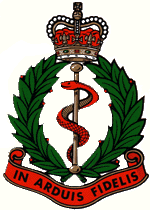
The Royal Army Medical Corps (RAMC) is a specialist corps in the British Army which provides medical services to all Army personnel and their families, in war and in peace. Together with the Royal Army Veterinary Corps, the Royal Army Dental Corps and Queen Alexandra's Royal Army Nursing Corps, the RAMC forms the Army Medical Services.
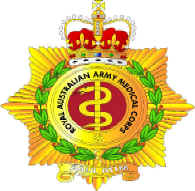
The Royal Australian Army Medical Corps (RAAMC) is the branch of the Australian Army responsible for providing medical care to Army personnel. The AAMC was formed in 1902 through the amalgamation of medical units of the various Australian colonies and was first deployed to South Africa as a small detachment of personnel supporting the Australian Commonwealth Horse during the Second Boer War. The corps has participated in every Australian Army operation since then, including wars and peacekeeping operations. The "Royal" prefix was granted in 1948.

No. 12 Squadron was a Royal Australian Air Force (RAAF) general purpose, bomber and transport squadron. The squadron was formed in 1939 and saw combat in the South West Pacific theatre of World War II. From 1941 to 1943, it mainly conducted maritime patrols off northern Australia. The squadron was based at Merauke in western New Guinea from November 1943 to July 1944, when it was withdrawn from operations. After being re-equipped, it operated as a heavy bomber unit from February 1945 until the end of the war. The squadron continued in this role until it was redesignated No. 1 Squadron RAAF in February 1948. The squadron was reformed in 1973 to operate transport helicopters but was again disbanded in 1989.

Unit Colour Patches identify the wearer as belonging to a military formation or unit.

Lockhart River Airport is an airport in Lockhart River, Queensland, Australia, located approximately 800 km (500 mi) north of Cairns on the eastern coast of Cape York Peninsula. Being so remote with the road to Lockhart River being unpassable during the tropical wet season, the airport provides a vital transport hub for the community as well as being the only means of freighting in critical medical and other supplies during the summer months.

The 2/12th Field Ambulance was an Australian military unit of the Second Australian Imperial Force, serving during World War II. During their six years of service, over 200 soldiers were killed, the highest figure for a non-combatant unit in Australian history. The majority of the unit's casualties were suffered during the sinking of the hospital ship Centaur in May 1943. During the war, the 2/12th deployed personnel in support of Australian combat operations against the Japanese on Ambon, Timor and in Borneo before being disbanded in 1946.
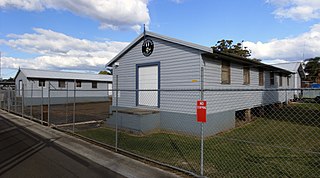
The 118th General Hospital was a U.S. Army military hospital built in 1942 at Riverwood, New South Wales. This was the largest military hospital in Australia, during World War II.
The 1st Close Health Battalion (1CHB) is a unit of the 17th Combat Service Support Brigade of the Australian Army. It is headquartered at the Robertson Army Barracks in Darwin, but has sub-units located in Darwin, Townsville and Brisbane. The unit traces its lineage back to the 1st Field Hospital, which was raised in the 1960s for service as part of Australia's contribution to the Vietnam War. Since then, the unit has changed names twice and personnel have been deployed on numerous peacekeeping and warlike operations throughout Africa, the Middle East and the Asia-Pacific region.

The 21st Airlift Squadron is part of the 60th Air Mobility Wing at Travis Air Force Base, California. It operates C-17 Globemaster III aircraft carrying out United States Air Force global transport missions.
The 4th General Hospital was a US Army medical unit during World War II.

Katherine Airfield was an airfield in the town of Katherine, Northern Territory, Australia that closed in 1978 when civil operations moved to RAAF Base Tindal, 15 km (9.3 mi) south of Katherine. The site of the airfield is now home to the Katherine Museum.
Bohle River Aerodrome was an aerodrome located 12.66 km (7.87 mi) west of Townsville, Queensland, Australia.

Breddan Aerodrome is a heritage-listed abandoned aerodrome at Gregory Developmental Road, Breddan, Charters Towers Region, Queensland, Australia. It is located 15 kilometres (9.3 mi) north of Charters Towers. It was built from 1942 to 1943 by Allied Works Council and Queensland Main Roads Commission. The airfield was constructed for the USAAF 38th Bomb Group in August 1942 as a satellite field for Charters Towers Airport, and later used by the Royal Australian Air Force (RAAF) during World War II as a maintenance base. Consisting of two runways, the airfield was abandoned after 1948. Today, the remains of the airfield consist of some deteriorating runways, taxiways and hardstands, mostly being reclaimed by grassland and shrub. No buildings have survived. It is also known as Breddan Airfield and Breddan WWII Aircraft Maintenance, Repair and Salvage Depot. It was added to the Queensland Heritage Register on 16 April 2010.
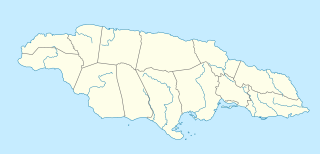
Vernam Field is a former World War II United States Army Air Forces airfield located in Clarendon Parish, 34.3 miles (55.2 km) west-southwest of Kingston, Jamaica. The airfield was renamed Vernam Air Force Base by the newly formed United States Air Force in 1948, but was closed in 1949.
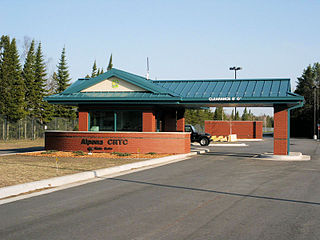
Alpena Combat Readiness Training Center is a Michigan Air National Guard training facility. It is located 7.1 miles (11.4 km) west-northwest of Alpena, Michigan.

Rhyndarra is a heritage-listed residence located at 23 Riverview Place, Yeronga, City of Brisbane, Queensland, Australia. The architect was Andrea Stombuco. It was built from 1888 to 1938. It is also known as No. 2 Women's Hospital, Australian Military Forces 1st Military Hospital, National Service Training Hospital, No. 1 Camp Hospital, and Yeronga Girls' Industrial School. It was added to the Queensland Heritage Register on 7 February 2005.
The Royal Australian Air Force Nursing Service (RAAFNS) was a branch of the Royal Australian Air Force, which existed from 1940 to 1946, and from 1948 to 1977. Members served in World War II, the Korean War, the Malayan Emergency, and the Vietnam War.

Rocky Creek World War Two Hospital Complex is a heritage-listed military hospital at Kennedy Highway, Tolga, Tablelands Region, Queensland, Australia. It was initially built in October 1942, with further construction continuing over the course of much of World War II. It was added to the Queensland Heritage Register on 25 February 2000.




















